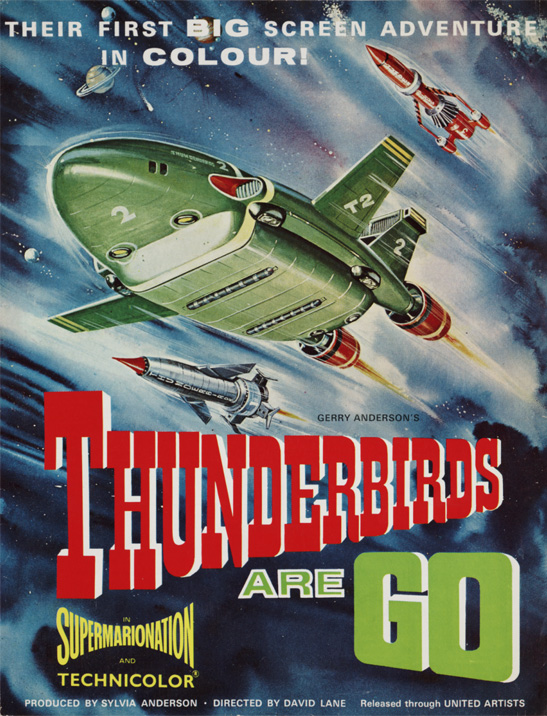
Gerry Anderson worked as a film editor before setting up his own film company called AP Films in the mid 1950s. His goal was to make live action films, but in 1957 he was asked to produce a series of puppet shows called The Adventures of Twizzle for ITV company Associated Rediffusion. Anderson’s ventures into live action film and television would never be as successful as his puppet productions.
After making a series called Torchy the Battery Boy (1960), AP Films created a new puppet series, Four Feather Falls (1960), in a converted warehouse on the Slough Trading Estate. These series were the first to use electronic lip synch, which made the puppets’ mouths open and close in time to dialogue. Gerry Anderson called this technique ‘Supermarionation’.
Although Anderson’s puppets were sophisticated, the major stumbling block was making them walk convincingly. Anderson’s next series Supercar in 1961 tackled this by creating a futuristic craft for his characters to pilot.
From this point on his series featured more and more science fiction devices and fantastic vehicles to move his slow moving heroes around.
If you’ve visited the Museum, you may have spotted some of Anderson’s heroes on display. Studio standard replicas of Thunderbirds’ Scott Tracy and Brains, and Captain Scarlet, are on display alongside other characters from the history of British Television, but we also have some original Gerry Anderson puppets in our collection.

Set 100 years in the future, in 2062/63, Fireball followed the intereplanetary adventures of the spaceship Fireball XL5, commanded by Colonel Steve Zodiac of the World Space Patrol. Also on board were navigator and scientist Professor Matthew Matic, glamorous doctor Venus, and co-pilot Robert the Robot.
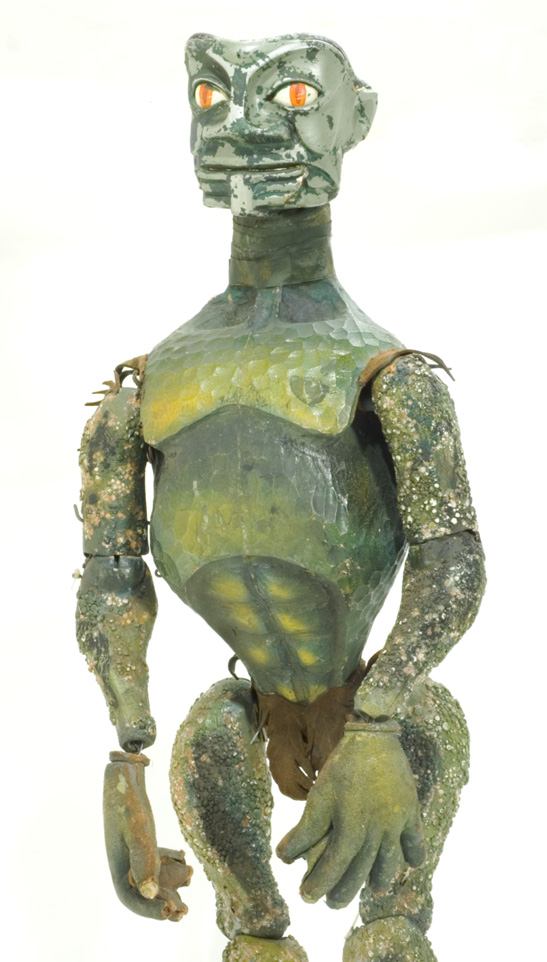
The below photograph from the Daily Herald Archive shows a cameraman* shooting a scene of the launch of Thunderbird 1 from its hiding place within Tracy Island, while his visual effects supervisor Derek Meddings operates the mechanical effects. Meddings went on to be one of the film industry’s most respected visual effects specialists.
(*Previously thought to be Gerry Anderson, but by this time, Gerry was usually to be found in his office or the editing suites, being mainly involved in planning and post-production.)
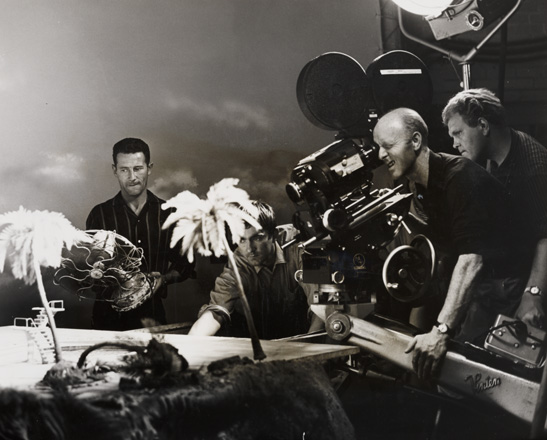
Not on display, but in our collection, we have a robot puppet from Thunderbirds.
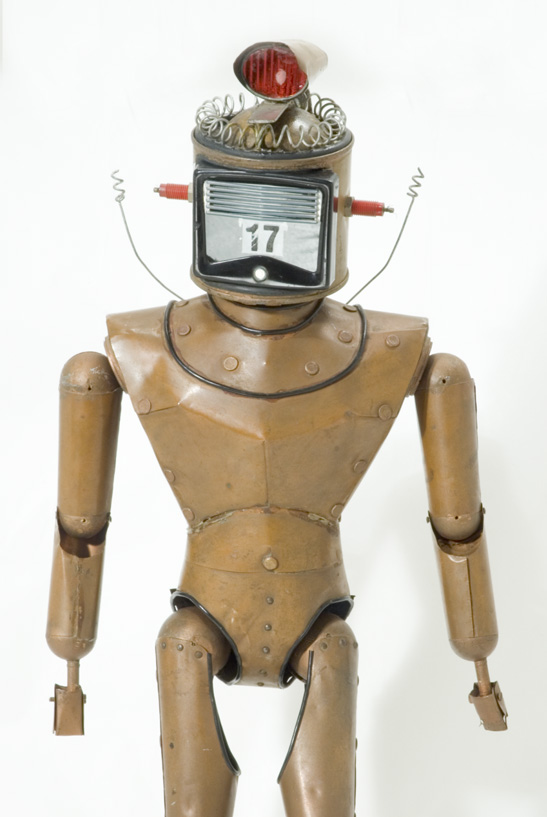
In the contact sheet frame below, also from the Daily Herald Archive, you can see Thunderbirds’ Peter Hayward and other puppet makers at work at at AP Film Studios in Slough.
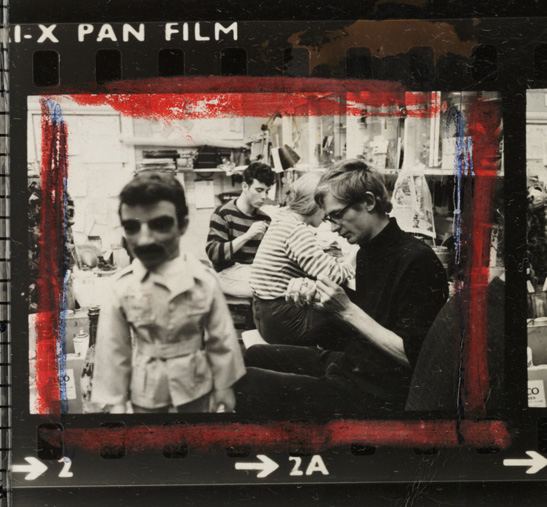
As Anderson strove for more realism and spectacle in his films, his puppets moved from caricatures to the more realistic human representations seen in Captain Scarlet and The Mysterons in 1967.
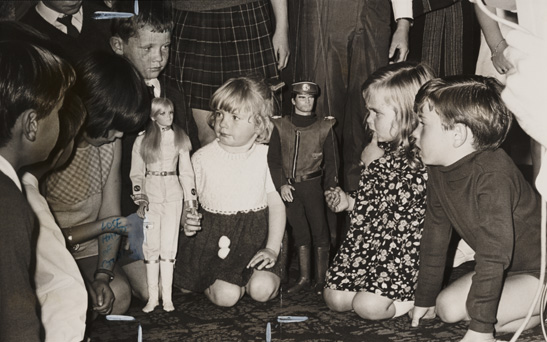
Finally, in 1970, Gerry Anderson accomplished what he set out to do at the start of his career as his first live-action series UFO was aired. UFO retained the futuristic action of Anderson’s earlier puppet series, but it ended a thirteen year career with puppets.
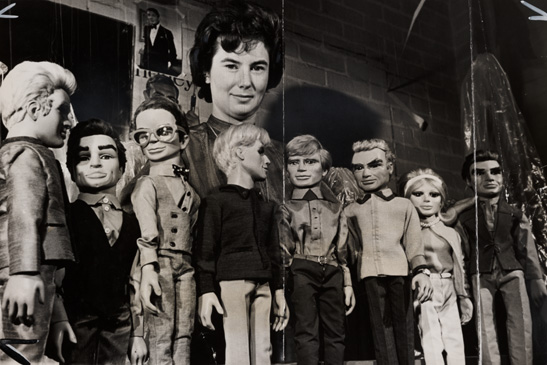
What was your favourite puppet production, or your most memorable Anderson moment? Mine’s got to be Terrahawks. I’ll never forget Zelda’s terrifying face!
Sorry to be a pedantic geek, but isn’t it Thunderbird 1 being filmed taking off? You can just make out the diving board steps for the swimming pool
Pedantic geekery is very welcome. Give me a couple of days and I’ll do my best to get to the bottom of this one.
How right you are! Good spot – consider it changed.
Very Interested to read this post, as I was involved in commissioning the Brains, Scott and Captain Scarlet puppets in your collection for MOMI many years ago and have been involved in various other Anderson related projects over the years. Your collection of photographs looks particularly interesting as they include some I’ve never seen elsewhere. But I should point out that the cameraman credited in the shot with Derek Meddings is not Gerry – although I can see there is a resemblence. By then (1966) Gerry was usually only to be found in his office or the editing suites, being mainly involved in planning and post-production.
Thank you so much, Sam. I’ve updated the post, and passed this on to the Collections team so we can update our records.
It’s great to hear from someone who’s been involved in one of our projects – especially when they can help with the accuracy of our data. All the best.
Very happy to help. I think you may also have a Thunderbird Two model on display that was made for MOMI with the involvement of members of the original Thunderbirds production team. Would be great to see a bigger exhibition at the museum based on their work !
I love to see behind the camera stuff, i recently saw this Gerry Anderson oddity, an actual piece of production equipment still surviving.
http://www.flickr.com/photos/56036250@N03/8455690408/
We are heading to the 50th Anniversary of the Production of Thunderbirds is the museum planning a celebration event for this iconic series?
There are some upcoming project of Gerry Anderson which is being produced by Anderson Entertainment
“After making a series called Torchy the Battery Boy (1960), AP Films created a new puppet series, Four Feather Falls (1960),”
TORCHY commenced production in 1958 , and F.F.F. in 1959.
***************
Mary’s family photograph is a wonderful perspective!
Mesmerizing !
Just wanted to say great page you have here. I enjoy all the supermarionation shows, and buying them all up on DVD. I will show them to my grandkids and carry on the tradition of just good fun entertainment.
ooh very good